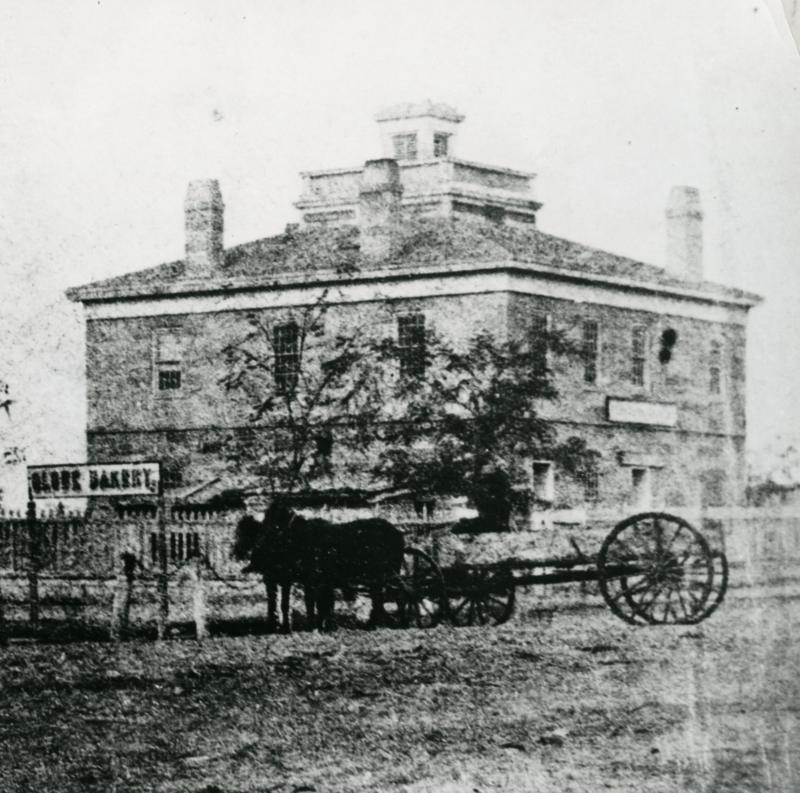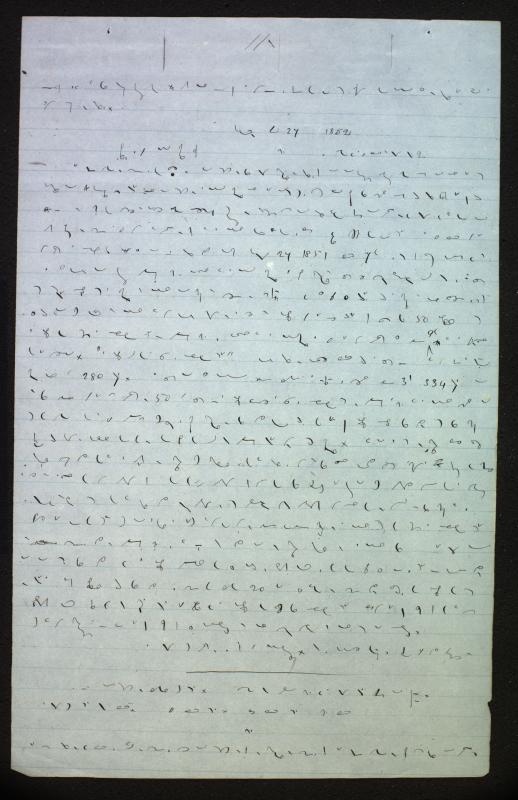This collection of documents brings together the most exhaustive compilation of primary sources to date on Indigenous and African American enslavement in Utah Territory.
Introduction
Beginning on January 5, 1852, Utah territorial lawmakers met on the southwest corner of South Temple and Main Streets in Salt Lake City in a building known as the Council House. Over the ensuing three months the Council House became the site of sometimes heated debates as territorial lawmakers grappled with the weighty matters of human bondage. Legislator and Latter-day Saint Apostle Orson Pratt called it "This Abominable Slavery."
Legislative recorder George D. Watt captured many of the speeches from the lawmaking session in Pitman shorthand, a method developed by Sir Isaac Pitman in 1837 which allowed scribes to capture near verbatim reports of what speakers said. (A sample page of Watt's shorthand is included here on the right). Watt failed to transcribe most of his own shorthand into longhand and none of the speeches were subsequently published in the Deseret News or the Journal of Discourses, typical venues for such public addresses.
Beginning in 2013, Pitman shorthand expert LaJean Purcell Carruth transcribed the speeches in this collection into longhand. Historian W. Paul Reeve added punctuation and created sentences out of the raw transcriptions that Carruth produced. Historian Christopher Rich joined Reeve to gather the speeches together and collect additional documents from the Utah State Archives and Utah Historical Society relating to African American and Indigenous slavery in Utah Territory. These various documents then formed the backbone for Reeve, Rich, and Carruth's book, This Abominable Slavery: Race, Religion, and the Battle over Human Bondage in Antebellum Utah (Oxford University Press, 2024), a narrative history of human bondage in the territory. Reeve, Rich, and Carruth, in cooperation with the Church History Department of the Church of Jesus Christ of Latter-day Saints and the Marriott Library at the University of Utah now make this collection of primary sources publicly available, some of them for the first time.
The seven chapters of documents presented here correspond with chapters four through ten in This Abominable Slavery and share the same chapter titles as those in the book. The book offers a narrative interpretation of the documents while this website provides access to the primary sources on which the book narrative is based.


